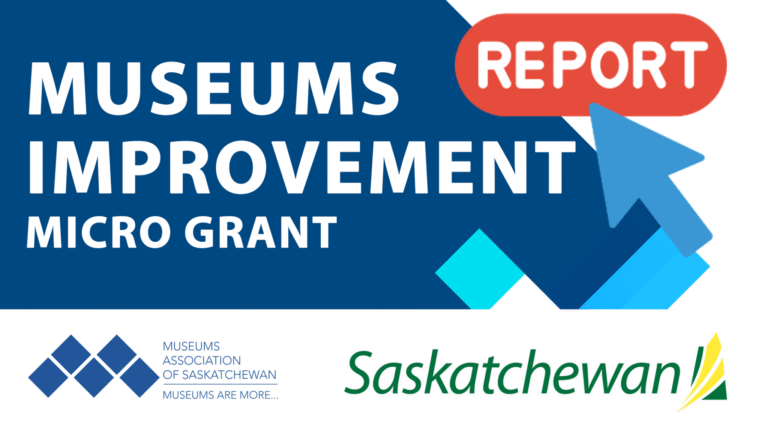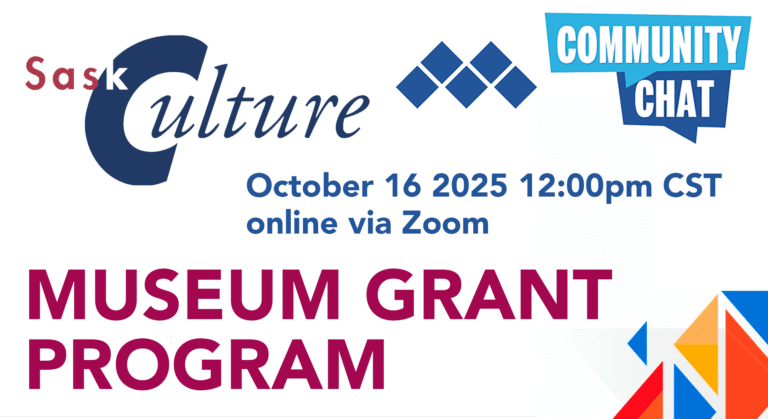Outreach & Online Programming at the Estevan Art Gallery & Museum
In conversation with Karly Garnier, Education, Outreach, and Programming Coordinator, Estevan Art Gallery & Museum.
The early days of COVID-19:
For the Estevan Art Gallery & Museum (EAGM), like elsewhere, what prompted the shift in how programming was offered at the gallery, was the lockdown. When everything ground to a halt in March, Spring programming came to a complete stop. Karly Garnier, the Education, Programming, and Outreach Coordinator, started looking at the possibilities for summer programming.
At this point, the focus was not on online so much as on outreach programming. It was the Summer, the anticipation was that people would want to take advantage of the outdoors, which seemed the perfect time to offer “Isolation Art Camp Kits”. Adapting the standard Art Camps to outreach kits was fairly straightforward, the activities/crafts are still viable, with the addition of printed and clear step-by-step instructions for the crafts and activities and all the necessary supplies (pencils, glue sticks, etc.). Since the Summer Day Camps were always intended to be affordable, the cost of these kits we similarly kept low (about $5.00 piece) thanks to a grant covering the cost of supplies. The flexibility of the kits allowed for families to take them with them camping or wherever, and to complete them at their own pace.
The EAGM also adapted their weekly in-person Family Art to outreach kits, which were offered at the same price as the in-person ($2.00 a kit).
Making the move to online programming:
The EAGM recognised that online programming would be crucial for the Fall. With kids going back to school, educational programming would undoubtedly be very different with COVID-19. The development of online programming did not mean an end to outreach programming kits, they are both excellent ways of reaching audiences with diverse needs.
Karly pitched curriculum outreach kits and virtual tours of the exhibitions to teachers and schools in the Southeast Cornerstone School Division. The curriculum kits were offered every month to a variety of ages. These kits would be tailored to meet particular objectives, and follow the same model as their summer outreach kits, clear printed instructions and all supplies provided. Virtual tours were mainly of the galleries until June when the North West Mounted Police Museum opened for the season.
It wasn’t just the educational programming that took advantage of online, but curatorial content started too as well. Trying to work around the restrictions and inherent risk of public gatherings to continue to provide traditional exhibition openings was not really feasible. However, working with a local videographer, the EAGM was able to make short videos of exhibitions and upload them to their YouTube Channel and Social Media (Facebook and Instagram) to share with their community. By putting videos of artist talks, exhibitions, and interviews online the EAGM is providing their audiences with a longer-lasting, more intimate look at the exhibitions shown in the gallery. Not to mention, the ability to use the video clips as advertising to teachers for potential tours.
For the virtual tours, Karly used whatever platform the schools/teachers were using; the public school division used Microsoft Teams, a separate division used Google Meets, and a few used Zoom. In the beginning, she just used her iPhone to provide virtual tours. Later, with the help of a summer student and a cart adapted for stabilising and manoeuvring, a laptop was used to provide virtual tours around the gallery. Air pods were also an invaluable investment to mitigate feedback and cut back on external sounds to provide a clearer audio connection.
It was a really painless transition. It was just a matter of trying things out. The hardest part was finding the supplemental grants to help cover the cost of supplies necessary for the kits. Without the aid of grants, outreach programming would not have been possible.
In a lot of instances, the ability to pick up kits to do activities with children on their own schedule was a great boon to working parents who would otherwise have been unable to share these opportunities with their children.
Programmes offered:
Isolation Art Camps Kits – Outreach programming kits that replaced the in-person art camps, for ages 6 – 12. These “take and make” kits were advertised weekly and three different kits were available for each week from June to August.
Isolation Family Art Kits – Outreach programming kits for children aged 18 months – 5 years which included printed instructions and all necessary supplies to complete each project.
Weekender Art Kits – Offered weekly from September 2020 – June 2021, which followed the same model as the “Isolation Art Camp Kits”.
Virtual Gallery Tours and Curriculum Outreach – Offered to schools in the Southeast Cornerstone School Division from September – June. Teachers could choose from live, virtual tours of current exhibitions, outreach curriculum-based projects, or a PowerPoint presentation of the North West Mounted Museum.
Outreach Adult/Teen Programs – These outreach kits were offered from September – June, containing all supplies necessary for each craft and printed instructions.
Holiday Programming – Outreach programming kits that offered 12 days of arts and crafts, like the 12 days of Christmas, in December.
Essentially, any in-person programming that the EAGM would have been otherwise offering, was adapted to outreach or online programming to ensure continued access to their community.
What does the future of programming look like?
Hybrid.
The ability for museums and galleries to adapt their programming to accommodate a variety of needs, whether that is in-person, virtual, or outreach, can only be an asset.
This Summer in-person art camps ran once again, with limited space to accommodate physical distancing measures, but the outreach kits were also kept available. In the past parents of kids in the Art Camps have usually had to miss a day here or there due to other family events. The outreach kits allow them to still participate despite their schedule.
Outreach allows participants (and their families) to proceed at their own pace. It makes it just a little easier to help busy parents plan and make time in their weekly schedules. In fact, Karly kept meticulous notes about the participation numbers for the EAGM’s outreach and virtual tours from June 2020 – June 2021: Isolation Art Camp Kits had 221 participants; Isolation Family Art Kits had 670; Weekender Art Kits had 71; Virtual Gallery Tours and Curriculum Outreach had 1,184; Outreach Adult/Teen Programs had 120; and the Holiday Programming had 215. That is a grand total of 2,481 participants to their educational outreach and online programming.
And virtual options for schools can go a long way in helping teachers provide opportunities to their students that would otherwise not be possible without funds to procure a bus and have appropriate waivers signed by parents. Museums have long seen the number of schools willing or able to participate in field trips dwindling, the ability to offer a virtual tour only creates more points of access.
Program offerings currently are a mix of all three (online, outreach, and in-person).
Website: https://eagm.ca
Facebook: https://www.facebook.com/EstevanArtGalleryAndMuseum/
Instagram: https://www.instagram.com/explore/locations/428256371/estevan-art-gallery-museum?hl=en
YouTube: https://www.youtube.com/channel/UC4XlznAjFpvvWU1KNx2uqWQ/videos
In summary:
Use social media to promote your programs and events;
Using a headset (air pods) to minimise background noise and provide clearer audio for virtual tours and programming;
Use whatever platform works for schools/teachers, the public school division used Microsoft Teams, a separate division used Google Meets, and a few used Zoom.
Tip:
What works for one institution may not work at another, you have to know your audience and do what works for you.



